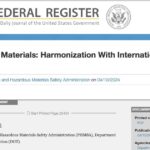In three recent, separate incidents across the country, hazmat teams were called out to investigate suspicious substances. Taken together, they give us reason to review some precautions and best practices when confronting these types of calls.
The first goes down as the most likely of the three to be an innocent mistake. WHO 13 reports that in late November hazmat teams were called to the Iowa Supreme Court building in Des Moines for a white-powder substance in the mailroom.
Hazmat crews were on scene for about an hour; testing showed the substance was safe. It appears someone tried to mail a seashell, which broke apart.
The second incident took place the same week in Baton Rouge, La. While no one was sickened, three were sent to the hospital and cleared. Of the three incidents, this is most likely to be a hoax.
KLFY reported that three bank employees were in contact with suspicious flyers left in the night drop box. The Baton Rouge Fire Department said at least five other businesses received the same flyers. Several businesses in the area were evacuated.
The FBI took over the investigation, which was still going on.
Finally, hazmat teams in Malden, Mass. were dispatched just before Thanksgiving for a suspicious substance. This, of the three, presented the most real threat.
The call began when police, fire and EMS responded to an apartment for an EMS call. Boston 25 reports that when police arrived they found a white substance in the apartment.
Hazmat units were called and their analysis showed the substance was fentanyl. Hazmat crews cleaned the scene and there were no reported injuries or resulting illnesses.
Also Read: 3 Tips for a Safer Illegal Drug Lab Response
Here’s a look back at our top three tips to remember when handling these calls.
ONE
It has been said over and over, but it is critical to train with other responders before a real call comes in. In these cases, hazmat teams had to work side-by-side with law enforcement. Getting on the same page early in the emergency comes from practicing together and learning each other’s needs and expectations.
TWO
Team leaders who will serve as incident commanders need to train on which scenarios require what level of public protection. In one instance above, shelter in place was ordered, while a small evacuation was undertaken in the other. Get that protection activated quickly in case things go sideways early.
THREE
Train first-due firefighters on suspicious packages and substance evolutions. These don’t require a lot of props and can be done inside most firehouses. Make sure the training involves both false alarms and real substances. Most of all, make sure the evolutions focus on problem-solving skills.
Original post – Copyright © 2022 HazmatNation.com. Externally linked references may hold their own independent copyright not assumed by HazmatNation











